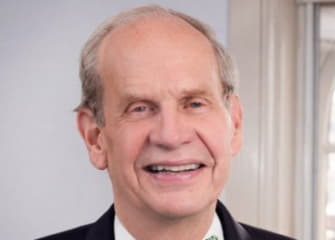
Thomas E. Wilcox
We all agree: The status quo is unacceptable. Too many people are dying, too many people are leaving, too many people are languishing. Our hope for the city we love is at risk. We must act, together.
While Baltimore foundations, nonprofits and other institutions have their individual areas of focus, civic leaders in the public, private and nonprofit sectors can commit to partnering broadly to pursue essential strategies in five areas critical to the city’s health.
Crime
We cannot immediately dismantle the drug trade that drives so much of the violence in Baltimore as the demand for drugs should be treated as a long-term public health issue. But we can focus on ensuring incarceration for the relatively small group of repeat gun offenders who are responsible for so much of our violent crime.
In the meantime, we should replace conversations about mandatory sentences for first-time violators with mandatory opportunities for them to improve their lives. Excellent rehabilitation services, job training, structured mentorships and support services already available in Baltimore should be expanded to reach these vulnerable young people and lead them to productive lives.
Tom Wilcox CEO of Baltimore Community Foundation
We should also expand the “Safe Streets” initiative across the city. Despite some challenges, Safe Streets Baltimore has significantly reduced shootings and homicides in all of its targeted areas. These interventions work and bring relief to troubled neighborhoods.
New police recruits must also live in the city and better reflect our demographics. With better training of a force that has a median age of only 26, we can begin to transform the culture of the department. The price tag would be relatively low and the return significant.
Public education
Focused strategies to improve Kindergarten readiness among Baltimore’s 5 year olds have proven their value, and a growing number of Baltimore’s traditional, charter and community schools are thriving, attracting and retaining families. But we must do better, as we continue to lose many middle-class students to other regions between the 1st and 6th grades.
We know what it takes to create great schools, and we have a Blueprint for Success and a leader who can deliver it, but we lack the resources needed for all schools to thrive. We have a unique opportunity in the Kirwan Commission on Excellence and Innovation in Education, which is assessing the state’s true educational needs. New resources should go to proven strategies that will improve student performance and give Baltimore the workforce it needs to compete in a global economy. I urge the General Assembly and all gubernatorial candidates to recognize the enormous need for new resources in our schools and embrace the Kirwan findings.
Economic development
Improved transit and a revitalized State Center could propel Baltimore in important ways. While there are jobs and job centers available in some communities, it’s hard for many people to reach them. The new Baltimore Link system, while well-intentioned, doesn’t come close to offering the coordinated access that is common to great cities around the world. New and affordable technologies like Bus Rapid Transit offer economical and efficient alternatives to railed vehicles and could build on MARC and existing rail lines to transform our economy. And Gov. Larry Hogan and Mayor Catherine Pugh need to make good on their plans to retain state jobs and create transit-oriented development at State Center.
Racism
Across the country, overt racism has again reared its ugly head, but we know that more powerful institutional and structural racism never abated. Most of Baltimore’s problems emanate from centuries of discrimination and marginalization that have willfully limited opportunity and institutionalized intergenerational poverty. We cannot move ahead without fully understanding and acting to undo the impact of slavery and Jim Crow, redlining and other racially motivated laws that contribute to our unacceptable status quo. It is time for Baltimore to face up to and overcome this legacy — for ourselves and to set an example for the nation.
Telling our story
Finally, those of us lucky enough to live comfortably in Baltimore appreciate its attractions and affordability, but that story has been drowned out by national and global news reports that followed the April 2015 unrest.
We need to share our Baltimore stories broadly, without glossing things over, telling the world about what a great place to live, learn, work and play our city can be. We remain an attractive tourist destination. And we offer great opportunities to new businesses and residents. We urgently need to expand our tax base and economy and pay for the services we need for all Baltimoreans to have the opportunity to thrive.
It’s a complicated story, but one well worth sharing.


































